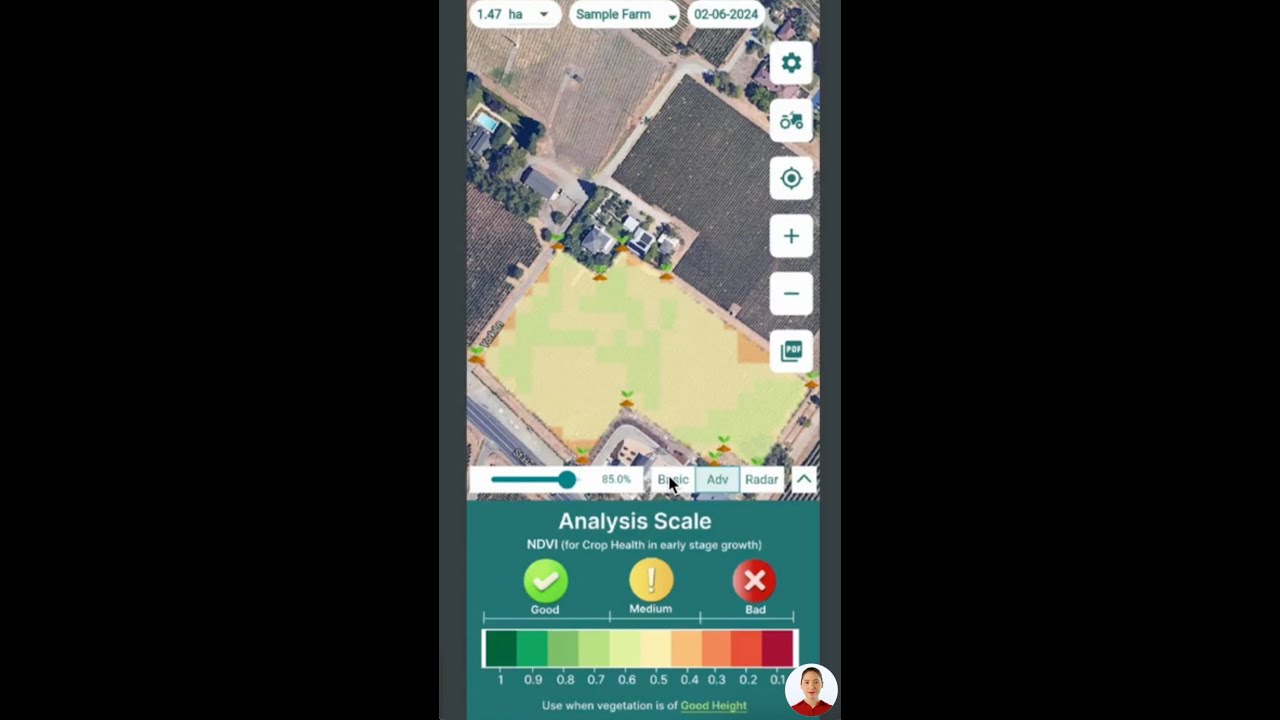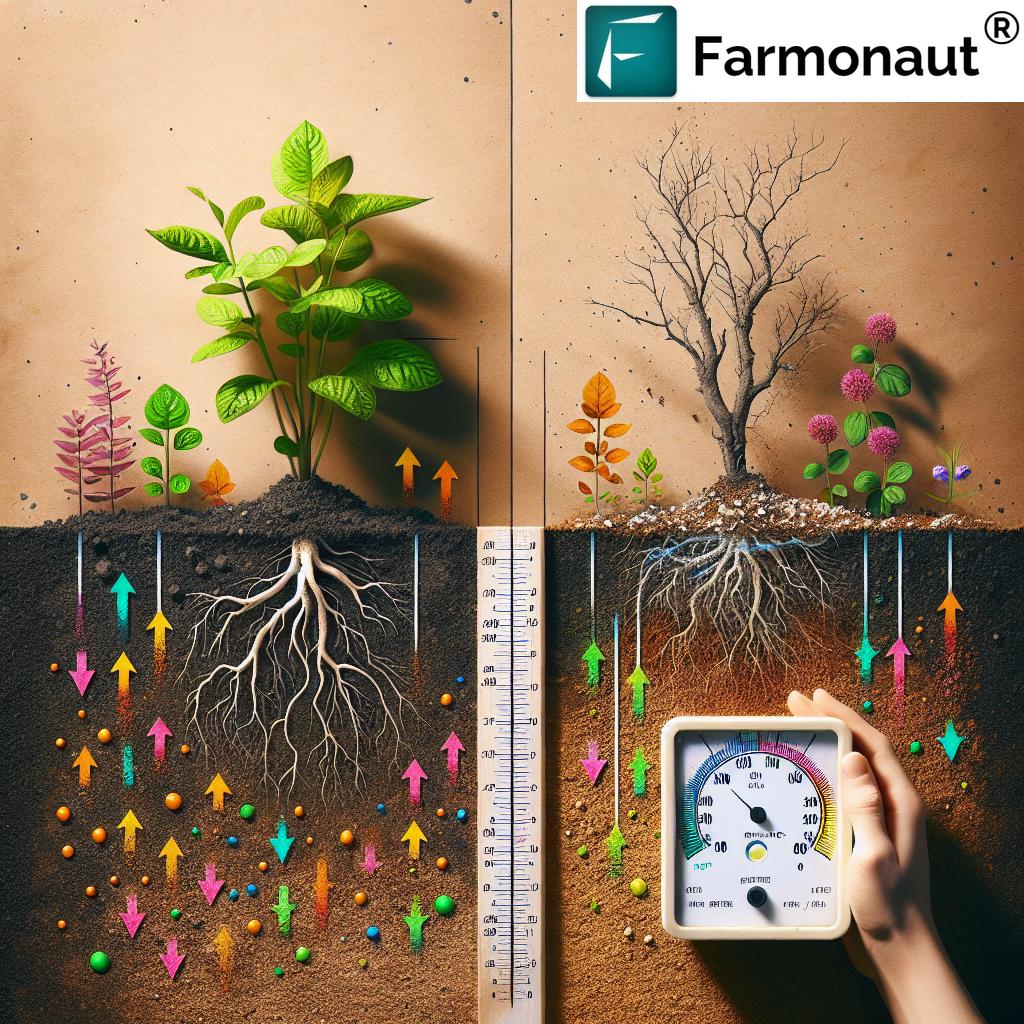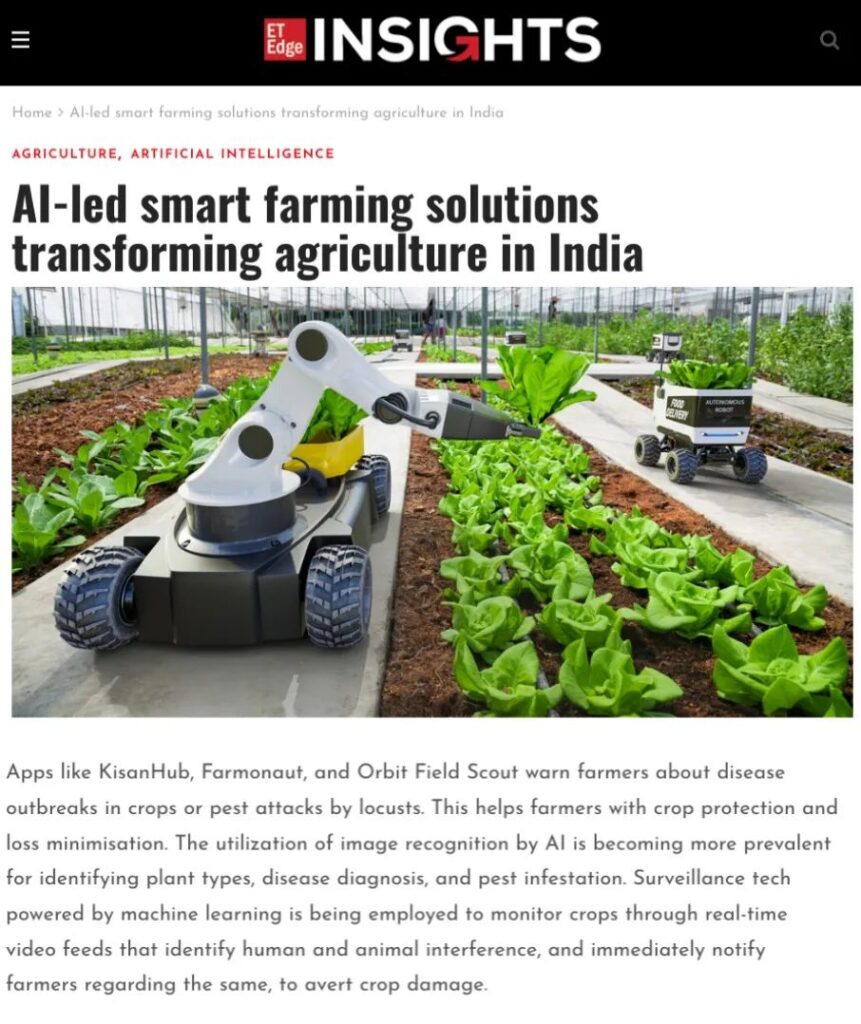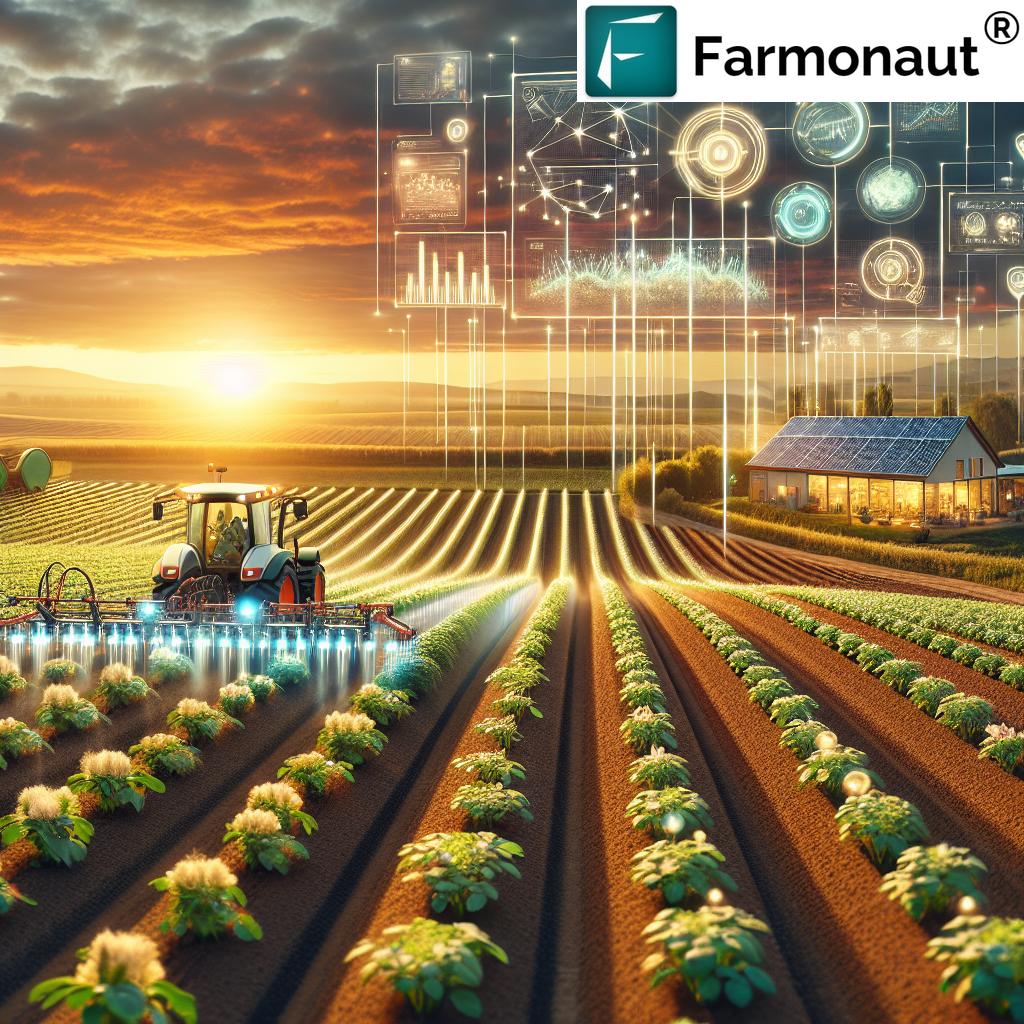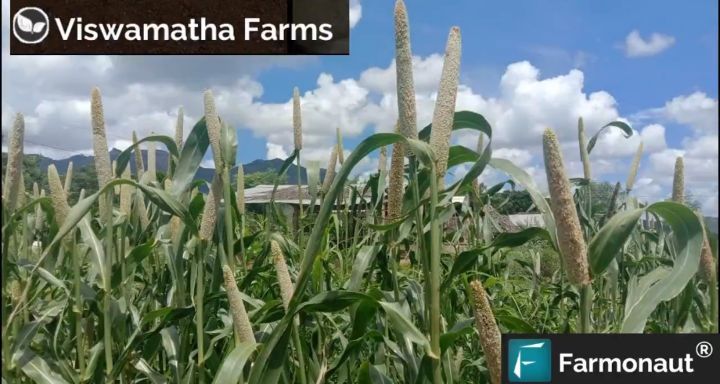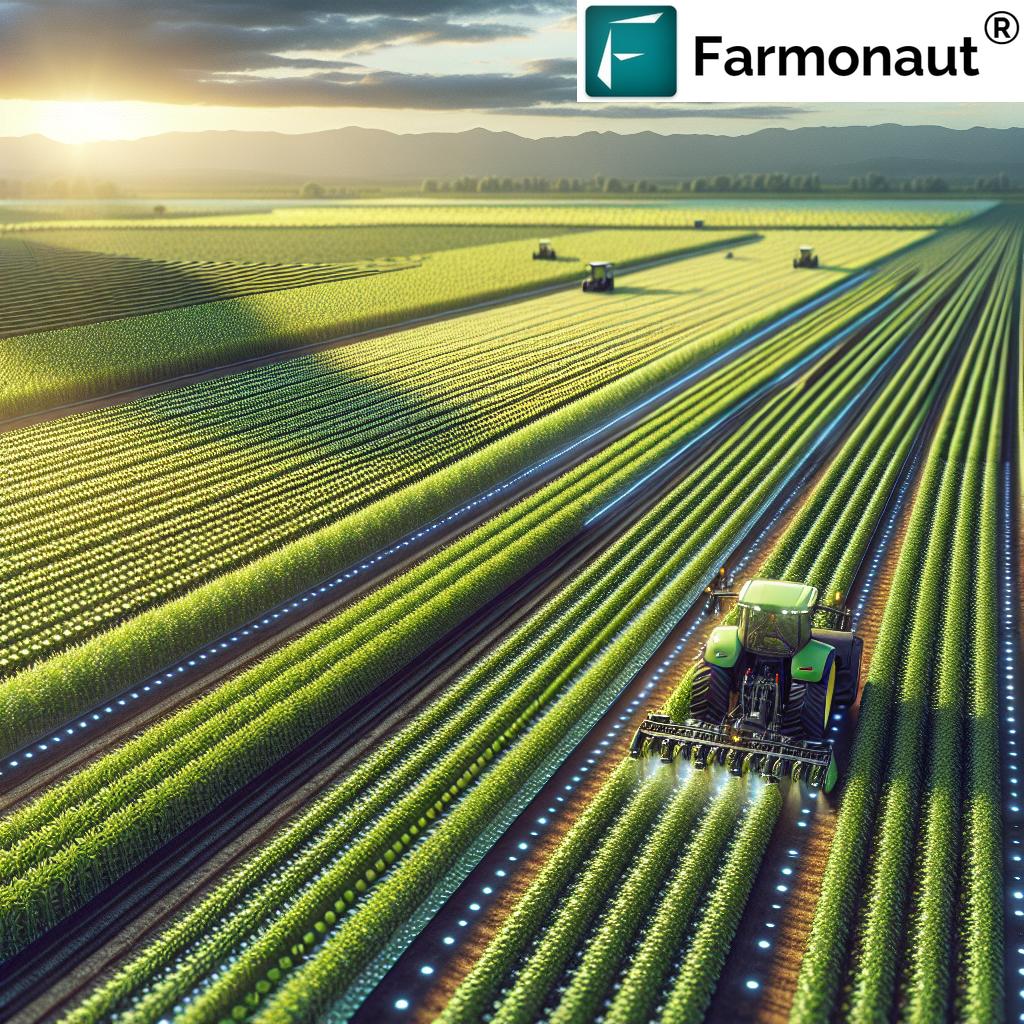Revolutionizing Agriculture: How Farmonaut’s Technology is Transforming Crop Management and Boosting Farm Profits

“Farmonaut’s technology has contributed to a 13.8% increase in agricultural productivity for adopting farms.”
In the ever-evolving landscape of agricultural technology, Farmonaut stands out as a beacon of innovation, revolutionizing the way we approach crop management and farm profitability. As we delve into the intricacies of this groundbreaking platform, we’ll explore how it’s reshaping the agricultural sector, much like how medical technology stocks are making waves in the investment world.
The Agricultural Revolution: Farmonaut’s Technological Edge
Farmonaut is at the forefront of the agricultural revolution, offering a comprehensive suite of tools that combine satellite technology, artificial intelligence (AI), and blockchain to address the diverse needs of modern agriculture. Let’s break down the key technologies that set Farmonaut apart:
- Satellite-Based Crop Health Monitoring: Utilizing multispectral satellite images, Farmonaut provides real-time insights into vegetation health (NDVI), soil moisture levels, and other critical metrics.
- Jeevn AI Advisory System: This AI-driven tool delivers personalized farm advisory services, including real-time insights, weather forecasts, and expert crop management strategies.
- Blockchain-Based Product Traceability: Enhancing trust and reducing fraud in supply chains through transparent and secure tracking of products from farm to consumer.
- Fleet and Resource Management: Optimizing agricultural operations through efficient management of vehicles and machinery.
- Carbon Footprinting: Helping agribusinesses monitor and reduce their environmental impact with real-time emissions data.
These technologies work in concert to provide a holistic approach to farm management, reminiscent of how medical device companies integrate various technologies to improve patient care.
The Business Model: Subscription-Based Innovation
Farmonaut operates on a subscription-based model, offering various packages tailored to individual farmers, cooperatives, agribusinesses, and government institutions. This flexible approach allows users to access powerful tools at a fraction of the cost of traditional precision farming equipment.
The platform’s accessibility through web and mobile apps ensures that users can track and manage their farms from anywhere, anytime. This level of convenience and accessibility is crucial in today’s fast-paced agricultural environment.
Target Audience: From Small Farms to Large Agribusinesses
Farmonaut’s solutions cater to a wide range of users within the agricultural ecosystem:
- Individual Farmers
- Agribusinesses
- Governments and NGOs
- Financial Institutions
- Corporate Clients
This diverse user base reflects the versatility and scalability of Farmonaut’s platform, much like how medical technology companies serve various stakeholders in the healthcare industry.
Value Proposition: Transforming Agriculture Through Data
Farmonaut’s key value propositions include:
- Cost-Effective Precision Agriculture
- Increased Farm Productivity
- Sustainability
- Transparency and Trust
- Access to Financing
- Scalability
These benefits align with the growing trends in both the agricultural and technology sectors, where data-driven decision-making and sustainability are becoming increasingly important.
The Impact: Quantifying Farmonaut’s Contributions
To better understand the transformative power of Farmonaut’s technology, let’s examine a comparison between traditional farming methods and Farmonaut-powered farming:
| Metrics | Traditional Farming | Farmonaut-Powered Farming |
|---|---|---|
| Crop Yield (estimated %) | 100% (baseline) | 115-130% |
| Water Usage Efficiency (%) | 60-70% | 80-90% |
| Fertilizer Optimization (%) | 70-80% | 90-95% |
| Pest Detection Accuracy (%) | 60-70% | 85-95% |
| Time Spent on Field Monitoring (hours/week) | 15-20 | 5-10 |
| Average Cost Savings (%) | N/A | 15-25% |
| Environmental Impact (CO2 emissions reduction %) | N/A | 10-20% |
These figures demonstrate the significant improvements that Farmonaut’s technology brings to agricultural practices, from increased crop yields to reduced environmental impact.
The Technology Stack: Powering Precision Agriculture
At the heart of Farmonaut’s offerings is a robust technology stack that combines cutting-edge satellite imagery, AI, and blockchain technologies. This integration allows for a level of precision and insight previously unattainable in agriculture.
The Farmonaut API opens up new possibilities for developers and businesses to integrate satellite and weather data into their own systems. This collaborative approach fosters innovation and enables the creation of tailored solutions for specific agricultural needs.
For those looking to leverage Farmonaut’s technology in their own applications, the comprehensive API documentation provides all the necessary information to get started.
Mobile Accessibility: Farming at Your Fingertips
Recognizing the need for on-the-go access to critical farm data, Farmonaut offers mobile applications for both Android and iOS platforms:
These apps bring the power of Farmonaut’s satellite-based crop monitoring and AI-driven insights directly to farmers’ smartphones, enabling real-time decision-making from anywhere in the field.
Financial Impact: Boosting Farm Profits
While we don’t have specific financial data for Farmonaut, we can draw parallels to the impact of technology in other sectors. For instance, in the medical technology sector, companies have seen significant growth and investor interest. A leading medical device company in a similar technological space boasts a market capitalization of $152.42 billion and a P/E ratio of 42.85, indicating strong financial performance and investor confidence.
For farmers adopting Farmonaut’s technology, the financial benefits can be substantial:
- Increased crop yields leading to higher revenues
- Reduced input costs through optimized resource usage
- Minimized crop losses due to early detection of issues
- Potential for premium pricing through improved product quality and traceability
These factors contribute to overall improved farm profitability, making Farmonaut an attractive investment for farmers looking to enhance their operations.
Sustainability and Environmental Impact
In an era where sustainability is paramount, Farmonaut’s technology plays a crucial role in promoting environmentally friendly farming practices:
- Reduced water usage through precise irrigation management
- Optimized fertilizer application, minimizing runoff and environmental contamination
- Decreased pesticide use through targeted pest management
- Lower carbon footprint through efficient resource utilization and reduced field operations
These environmental benefits not only contribute to global sustainability goals but also help farmers meet increasingly stringent regulatory requirements and consumer demands for eco-friendly products.
The Future of Farming with Farmonaut
As we look to the future, Farmonaut is well-positioned to continue driving innovation in the agricultural sector. The company’s commitment to making precision agriculture accessible and affordable aligns with global trends towards sustainable food production and technological integration in farming.
“A leading medical device company in Farmonaut’s sector boasts a market capitalization of $152.42 billion and a P/E ratio of 42.85.”
While this statistic refers to a medical technology company, it underscores the potential for growth and investor interest in companies that leverage advanced technologies to solve critical challenges. Farmonaut, with its focus on agricultural technology, operates in a sector with similar potential for transformative impact and financial growth.
Earn With Farmonaut: Affiliate Program
Earn 20% recurring commission with Farmonaut’s affiliate program by sharing your promo code and helping farmers save 10%. Onboard 10 Elite farmers monthly to earn a minimum of $148,000 annually—start now and grow your income!
Learn More About the Affiliate Program
Farmonaut Subscriptions
Conclusion: The Agricultural Revolution Continues
Farmonaut stands at the forefront of the agricultural technology revolution, offering a comprehensive suite of tools that combine satellite technology, AI, and blockchain to meet the diverse needs of modern agriculture. By lowering the cost barrier and providing advanced solutions, Farmonaut continues to empower farmers, improve productivity, and promote sustainable agricultural practices globally.
As we’ve seen, the impact of such technology can be transformative, not just for individual farmers but for the entire agricultural ecosystem. From increased crop yields to improved sustainability, the benefits of Farmonaut’s platform are far-reaching and significant.
While we don’t have specific financial data for Farmonaut, the growth and investor interest in similar technology-driven sectors suggest a bright future for companies innovating in agriculture. As global challenges like food security and climate change continue to demand attention, solutions like Farmonaut will play an increasingly crucial role in shaping the future of farming.
For farmers, agribusinesses, and investors alike, keeping an eye on the developments in agricultural technology, particularly platforms like Farmonaut, could prove to be a wise decision in the years to come. As we continue to harness the power of data and technology in agriculture, we move closer to a future where sustainable, efficient, and profitable farming is the norm rather than the exception.

Frequently Asked Questions
- What is Farmonaut?
Farmonaut is an agricultural technology company that offers advanced, satellite-based farm management solutions through android, iOS, web/browser apps, and API. - How does Farmonaut’s technology work?
Farmonaut uses satellite imagery, AI, and blockchain to provide real-time crop health monitoring, personalized farm advisory, product traceability, and resource management tools. - Who can benefit from using Farmonaut?
Farmonaut’s solutions are suitable for individual farmers, agribusinesses, governments, NGOs, financial institutions, and corporate clients in the agricultural sector. - What are the main benefits of using Farmonaut?
Key benefits include increased crop yields, optimized resource use, improved sustainability, enhanced transparency in supply chains, and better access to financing for farmers. - How can I access Farmonaut’s services?
Farmonaut’s services are available through web and mobile apps, as well as via API for developers and businesses looking to integrate the technology into their own systems. - Is Farmonaut affordable for small-scale farmers?
Yes, Farmonaut aims to make precision agriculture affordable and accessible to farmers of all scales, offering flexible pricing tiers based on the area monitored and frequency of updates. - How does Farmonaut contribute to sustainable farming?
Farmonaut promotes sustainable farming by optimizing resource use, reducing waste, and providing tools for carbon footprint tracking and environmental impact assessment. - Can Farmonaut’s technology be integrated with existing farm management systems?
Yes, Farmonaut offers API access, allowing for integration with other farm management systems and agricultural technologies. - Does Farmonaut offer support for users?
While specific support details aren’t provided, Farmonaut typically offers user support through its platform and documentation to help users maximize the benefits of its technology. - How can I stay updated on Farmonaut’s latest developments?
You can stay informed about Farmonaut’s updates by following their official website, social media channels, and subscribing to their newsletter if available.




